|
The NEWFOUNDLANDERS
|
|
Apart from the training of British troops, Stobs saw the arrival of volunteers
from the British Empire.
One of the most colourful units to arrive was a regiment of men from Newfoundland, which at this time was still
an independent colony of the British and did not become a province of Canada until 1949.
|
|
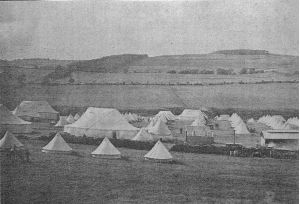
|
Although the colony did not have a large population to call upon, when Britain
entered into the war the Newfoundlanders found enough eager volunteers to form their own regiment. The men where
camped at Acreknowe Camp, just several hundred yards from the main camp at Stobs.
|
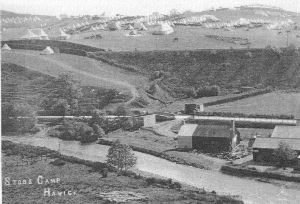
|
|
One of them, Frank 'Mayo' Lind wrote:
"Our tent is No.21 and we have quite a nice crowd, just a dozen. We have lots of music,
accordion, tin whistle, mouth organ, gramophone, and as soon as we get room will put in a small organ. Oh yes,
the boys are intent on having the organ, even if we have to move the washstand and dinner table out to make room
for it, and then we can enjoy the evenings in fine style for we have some nice singers amongst us. This is one
of the nicest days we've had since landing on this side, and a nice day in Scotland is beyond description, it makes
a fellow feel that life is worth living."
|
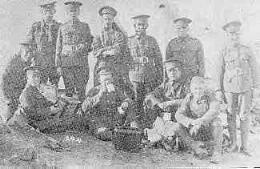
|
|
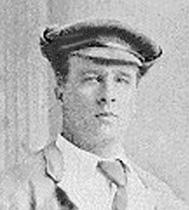
|
"I am writing this sitting on the grass outside our tent
and the sun is simply pouring down. We have just come back from a skirmish over the hills and this rest is good,
the boys are enjoying themselves at various games, just behind me some of them are playing ball and a few minutes
ago the ball landed with a bump at my feet. I thought it was a bomb and the Germans had come at last and was going
to run for my arms, only to find an innocent ball kicked out of bounds by a player.
All the boys are well and happy, and everything goes along merrily."
|
|
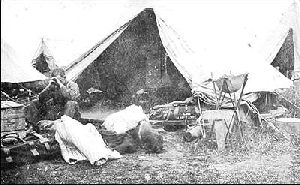
|
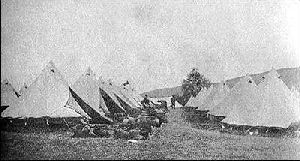
|
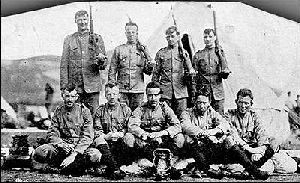
|
|
Courtesy of the Provincial Archives of Newfoundland and Labrador
(PANL VA-36), St. Johnís, Newfoundland.
|
Courtesy of the Provincial Archives of Newfoundland and Labrador
(PANL VA-3-6), St. Johnís, Newfoundland
|
Courtesy of the Provincial Archives of Newfoundland and Labrador
(PANL VA-36-28), St. Johnís, Newfoundland
|
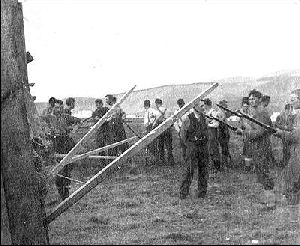 |
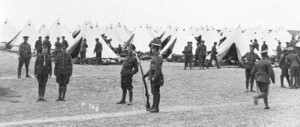
Courtesy of the Provincial Archives of Newfoundland and Labrador
(PANL VA-37-17), St. Johnís, Newfoundland.
Courtesy of the Provincial Archives of Newfoundland and Labrador (PANL VA-36-43),
St. Johnís, Newfoundland.
|

Courtesy of the Provincial Archives of Newfoundland and Labrador
(PANL VA-36-46), St. Johnís, Newfoundland
|
|
In July 1916, at the Battle of the Somme, the Newfoundland
Regiment was ordered to advance at 08.45 a.m. and consolidate the success of the previous battalions who had passed
before. Except that the previous attackers had suffered grievous loss in No-Man's-Land and had ceased to exist.
No one had cancelled the forthcoming attack, defeat was being reinforced. The Newfoundlanders were obliged to move
forward in the open because the communication trenches were blocked by the dead and wounded of the earlier attack.
They were the only troops visible on the entire battlefield, and immediately they came under fire. As the men bunched
at specially cut gaps in the barbed wire in front of the British line, it was said that they pulled their chins
down onto their chests as if battling against snow in the Newfoundland winter, except it was not snow, it was deadly
German machine-gun bullets.
In a matter of minutes, and before they had even got out into No-Man's-Land, the regiment had lost every officer
and over 650 men, either killed or wounded. In total, 91% of the regiment were casualties. They had achieved nothing.
Not one German was rendered a casualty because of the Newfoundland attack.
|
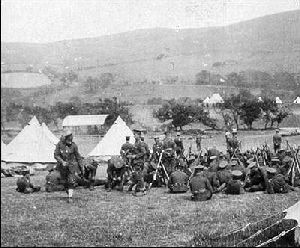
|
Courtesy of the Provincial Archives of Newfoundland and Labrador
(PANL VA-36-43), St. Johnís, Newfoundland.
|
|
|

Courtesy of the Provincial Archives of Newfoundland and Labrador
(PANL VA-40-9), St. Johnís, Newfoundland
|
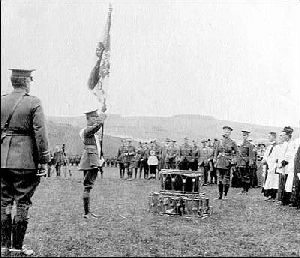
Courtesy of the Provincial Archives of Newfoundland and Labrador
(PANL VA-37-13), St. Johnís, Newfoundland.
|

Courtesy of the Provincial Archives of Newfoundland and Labrador
(PANL VA-40-9b), St. Johnís, Newfoundland
|
|
Writing in the spirit of the time, their divisional commander wrote:
'It was a magnificent display of trained and disciplined valour. The assault failed of
success because dead men can advance no further.'
Amongst their dead lay Frank 'Mayo' Lind who had kept a diary of his time while training at Stobs
|
|
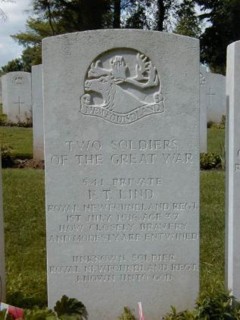
|
The body of Frank Lind was eventually buried in Y Ravine Cemetery at Beaumont
Hamel.
Of his friends who had shared his tent at Stobs, Archie Newman died of wounds
at Gezaincourt on the 3rd July, 1916 while Arthur Pratt was wounded on the 1st July.
|
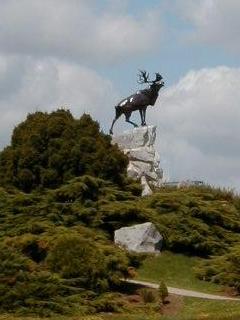
|
 |

|

|
|